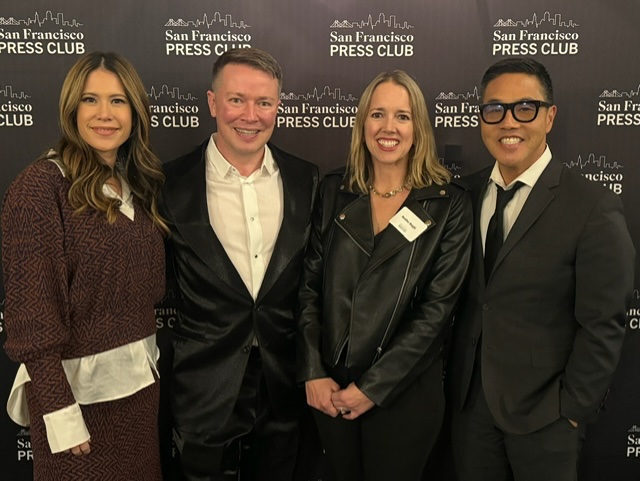This article first appeared in PRNewser.
When work treats me like a baby treats a diaper, I confess I sometimes read this post from The Guardian: “Treat us with respect: how to become your PR agency’s favourite client.”
The reason this British rant is so appealing to someone facing a momentary bout of professional self-pity is obvious from the whiny title to the passive-aggressive five-point wish list the author likely hopes his or her client will see. It’s something we wish we could tell some of our clients who view their interactions with PR agencies as transactions as opposed to relationships. The anonymous author, who boasted a six-year-career in public relations, demanded the following from clients:
- Transparency
- Relationship-building
- Streamlined approval process
- Reacting effectively to media opportunities
- Collaborative communication
“If clients look at PR partnerships in this way – as opposed to clinical and transactional – then you’ll certainly win my vote.”
What the author failed to explain was why the client would want to win his or her vote at all. If a client doesn’t get a vote, what happens? Someone else gets “elected?” PR stops? More likely there is a firing – from either the client’s side or within the agency. What the article conveyed rather convincingly, however, was the emotional frustration of an agency representative who knew the experience between client and agency could be so much more.
And “more” is exactly what other experts have been trying to uncover.
Taking MarketingProfs’ piece, “How to be a good Public Relations Client.” Ford Kanzler, a principal at Marketing/PR Savvy, wrote in 2008 about the importance of teamwork and collaboration. He cited press releases as an example of important agency/client collaboration. That’s where a company secured an outsider’s point of view to publish a press release that passes the “so what” test. He concluded, “Clients should continuously get more from their agency as time passes. As the relationship and the agency team’s client knowledge grows, so should the service quality level.”
In other words, being a good client means you will improve your PR return on investment.
Business publications have sought to explain how best to do that. Inc., for example, published “How to Make the Most of Your Public Relations Firm.” The 2010 article outlined four steps clients need to take:
- Focus on communications
- Set solid expectations
- Use all available services
- Work with your agency to deal with crisis situations
Five years later Forbes published “How to Manage Your Public Relations Agency” with a 10-point checklist, beginning with defining objectives, starting with trust, and giving a three-month window to see if the agency was capable of doing the job.
What these articles miss is the approach both parties need to get the most out of their symbiotic relationship with each other. For example, when the client is disappointed, how should they communicate their frustration to get the results they need? Will yelling work? A guilt trip? A plaintive request for help?
Or when the agency has heard the client suggest a very-bad-no-good idea, how should they voice their concerns? Immediately? With a guffaw? Or an audit of similar tactics and strategies to show likely outcomes?
“In my experience, PR people are generally creative and don’t respond well to being raked over the coals, yelling or anything emotional,” said Ann Ruckstuhl, CMO of SOASTA. “A good PR manager from the client side is someone who sets expectations and programmatic KPIs clearly and understands that mutual respect and trust is the most effective approach to dealing with a PR agency. I have found that agencies will not only meet their KPIs but surpass them if they are inspired by liking you rather than fearing you.”
“I’ve never understood why some PR agency clients don’t bother getting what they pay for,” said Sam Whitmore, an independent tech media analyst who founded Media Survey in 1998 to help PR agencies deliver better coverage for their clients. “I’ve asked around, and the best answer I ever got was, ‘Sometimes the client just wants a point-of-view.’ That’s beautiful. The next time I need a doctor or lawyer, I think I’ll just ask for their point-of-view before I go ahead and treat myself or defend myself.”
Tricia Heinrich, the chief content office at Bospar, has a balanced, perfect point of view of what both sides need to do, having been on the agency side as a senior vice president of Weber Shandwick Worldwide and the client side with both ON24 and Genesys Conferencing.
“We’re both after the same thing – we’re just coming at it from different directions,” she said. “I do think that there is one primary requirement for effective agency management, however. The best results are only possible when true partnerships are formed between a client and the agency. If you are disappointed with the results your agency is producing, don’t blame the agency—great results are a reflection of the client’s ability to make success possible.”
Which takes us back to the author of “Treat us with respect.” It’s not just Aretha Franklin he or she is channeling. It is also a plea for hope. By providing both, clients won’t simply have a happy agency but also a team of inspired media professionals who will do whatever it takes to improve the PR return on investment.



